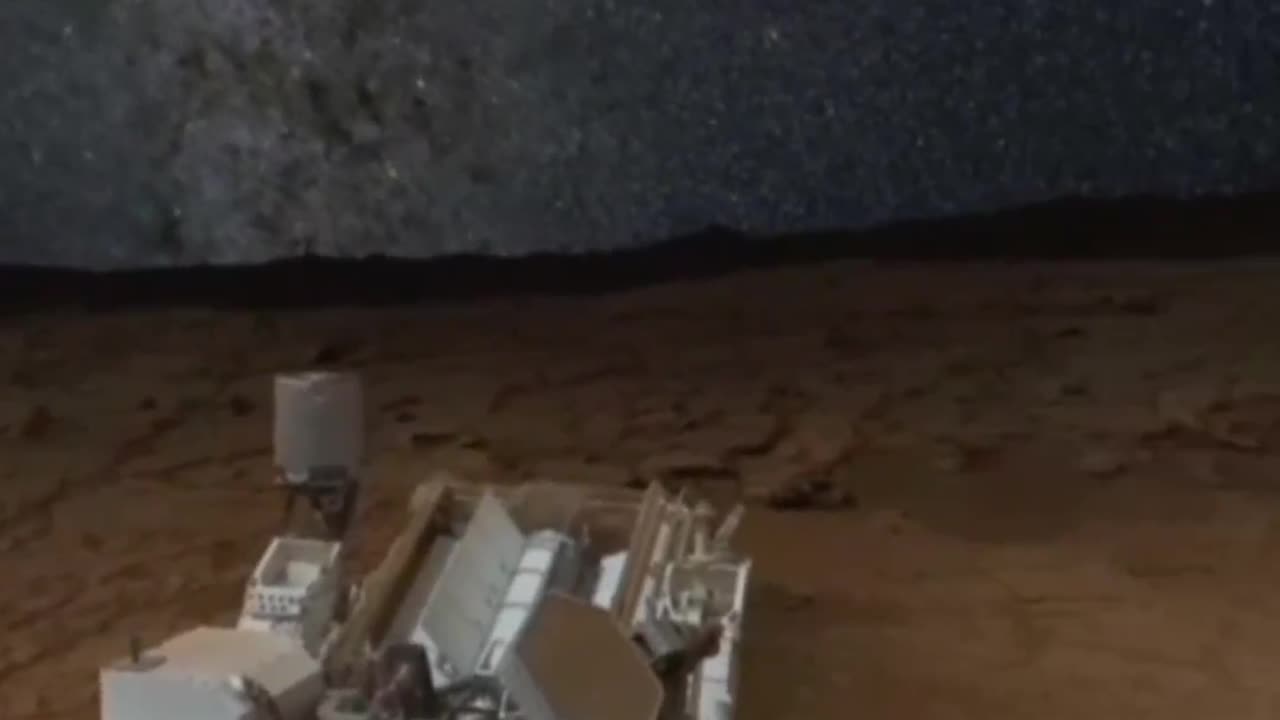Premium Only Content

How Mars Look Like In The Night
Mars is the fourth planet from the Sun in our solar system. It is often referred to as the "Red Planet" due to its reddish appearance, which is caused by iron oxide, or rust, on its surface. Mars is a terrestrial planet with a thin atmosphere, and its surface features include valleys, canyons, polar ice caps, and the largest volcano in the solar system, Olympus Mons.
Key facts about Mars:
Physical Characteristics: Mars has a diameter of about 6,779 kilometers (4,212 miles), roughly half the size of Earth. Its gravity is weaker than Earth's, about 38% of Earth's gravity. It has a day length of about 24.6 hours and a year length of approximately 687 Earth days.
Atmosphere: Mars has a thin atmosphere composed mostly of carbon dioxide (about 95.3%), with traces of nitrogen and argon. The thin atmosphere means that Mars has a weak greenhouse effect, resulting in colder surface temperatures compared to Earth.
Surface Features: Mars has a diverse landscape, including vast plains, towering volcanoes, deep canyons, and dry riverbeds. Valles Marineris is one of the largest canyons in the solar system, and Olympus Mons is a massive shield volcano. Mars also has polar ice caps made of water and carbon dioxide.
Water: Evidence suggests that Mars once had liquid water on its surface, and there are features that suggest the presence of ancient rivers, lakes, and oceans. However, most of the water is now frozen in the polar ice caps or subsurface ice.
Exploration: Mars has been a major target for space exploration. Numerous robotic missions have been sent to study the planet's geology, climate, and potential for past or present life. Notable missions include the Mars rovers (Spirit, Opportunity, Curiosity, and Perseverance) and various orbiters.
Possibility of Life: Scientists are interested in Mars' potential to host life, either currently or in its past. While there is no direct evidence of current life, the planet's history of water and the discovery of organic molecules have fueled speculation about the possibility of past microbial life.
Future Missions: Future plans for Mars exploration include sending humans to the planet, with organizations like NASA and private companies like SpaceX actively working on the technology and strategies to achieve this goal. These missions could pave the way for establishing a human presence on Mars in the coming decades.
Challenges: Mars exploration and colonization pose numerous challenges, including the harsh environment, radiation, lack of breathable atmosphere, and the need for life support systems. Overcoming these challenges requires advanced technology and careful planning.
Mars continues to be a focus of scientific research and exploration as humanity seeks to understand its history, potential for life, and its role in the broader context of our solar system.
-
 2:00:37
2:00:37
Space Ice
14 hours agoSpace Ice & Redeye Try To Figure Out Seagal's Most Incoherent Movie
134K5 -
 1:00:36
1:00:36
PMG
1 day ago $11.99 earned"Santa Trump is Giving Us Hope - But Will Johnson Stand Strong?"
102K14 -
 54:30
54:30
LFA TV
1 day agoThe German Strongman’s Arrival Is Imminent | Trumpet Daily 12.18.24 7PM EST
76.5K6 -
 2:04:11
2:04:11
Melonie Mac
12 hours agoGo Boom Live Ep 32! Soul Reaver Remastered!
63K10 -
 39:11
39:11
Sarah Westall
10 hours agoDigital Slavery and Playing with Fire: Money, Banking, and the Federal Reserve w/ Tom DiLorenzo
79.7K8 -
 1:38:38
1:38:38
2 MIKES LIVE
14 hours ago2 MIKES LIVE #157 ILLEGALS, PROTESTORS AND DRONES!
49.4K1 -
 1:01:03
1:01:03
LFA TV
1 day agoTHE LATEST SPENDING BILL IS AN ABOMINATION! | UNGOVERNED 12.18.24 5pm EST
50.2K48 -
 1:43:34
1:43:34
Redacted News
13 hours agoBREAKING! WARMONGERS PUSHING TRUMP TO LAUNCH PRE-EMPTIVE WAR WITH IRAN | Redacted News
164K286 -
 1:00:26
1:00:26
Candace Show Podcast
13 hours agoPiers Morgan x Candace Owens | Candace Ep 123
104K276 -
 2:06:51
2:06:51
Darkhorse Podcast
16 hours agoFollow the White Rabbit(s): The 256th Evolutionary Lens with Bret Weinstein and Heather Heying
69.4K32